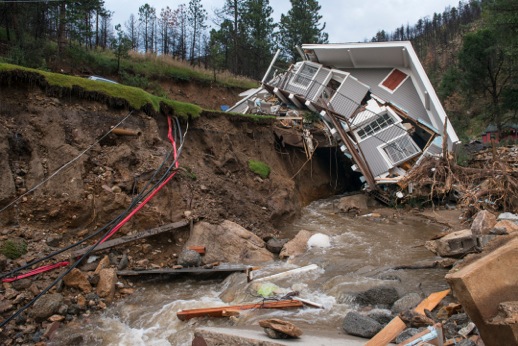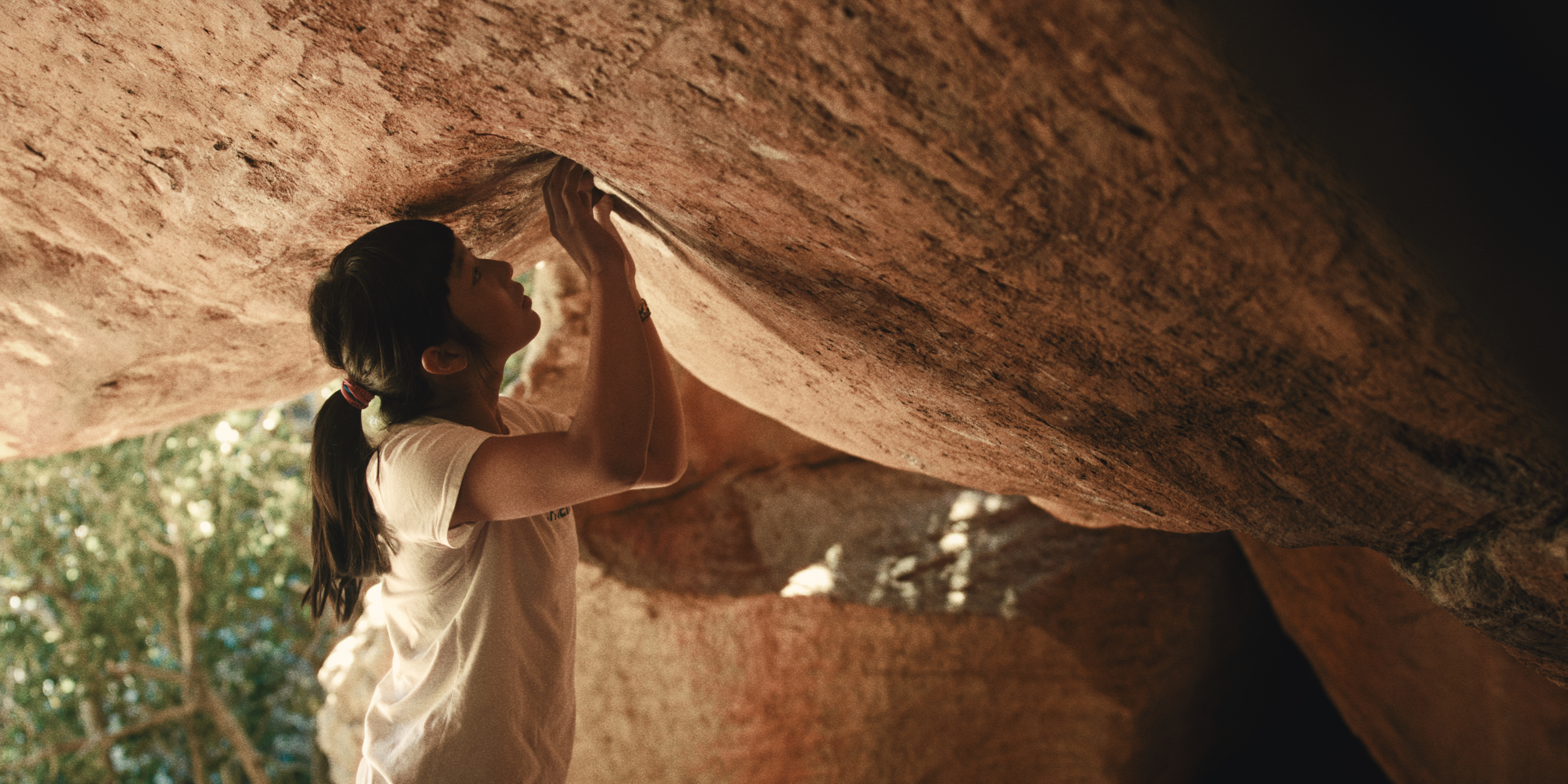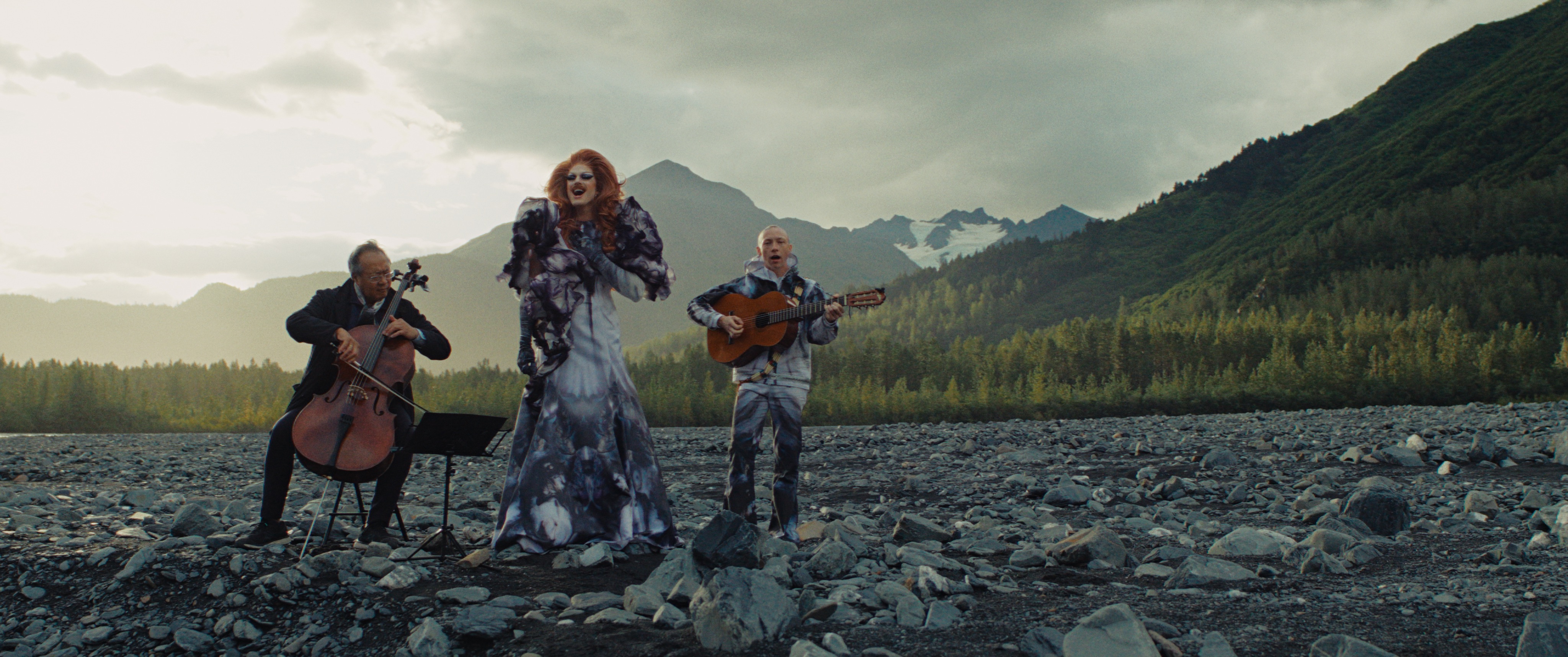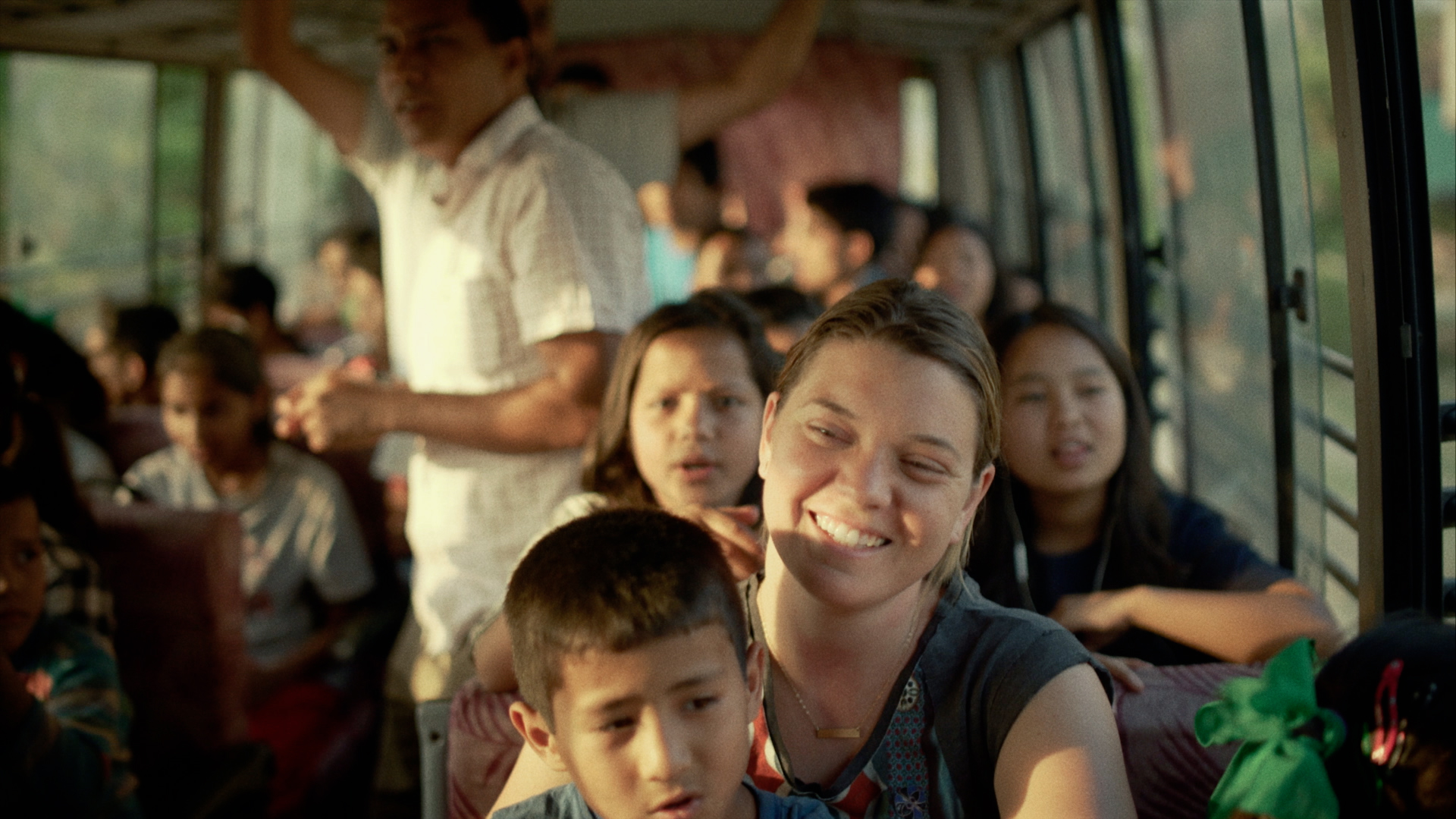
Boulder Floods: Worse Than You Can Imagine
We’ve been thinking about our many friends who live and work in Boulder, Colorado, where the recent floods have taken lives and caused enormous damage to property. James Balog, a longtime guest of Mountainfilm and the photographer whose work is featured in Chasing Ice, shares his story from last weekend when he returned to Boulder (from Maine) to spend two days cleaning up his house, dealing with road closures and logistics and shooting pictures:
It's way, way worse than you can imagine.
In the foothills outside Boulder, rain gauges caught 16 to 20 inches of rain in four days—but it fell on ground that was already super saturated by weeks of afternoon downpours. The moisture broke all relevant records. The rain would have equaled snow 13 to16 feet deep.
To those of us living in the mountains, the flood was not a flood. It was a battering ram, torrents of water mixed with enormous amounts of gravel, cobbles, boulders, trees, cars and fragments of homes. The rain came in gigantic pulses, so the torrents did too. Large stretches of the city, where the imprint of houses and streets has long-masked any sense that the topography was originally designed by nature to drain water, suddenly became deep rivers. (By the way, Telluride and Vail have a comparable topographic problem.) Dozens of landslides and debris flows—coagulated rock and soil that looked like lava pouring from volcanoes—ripped down east-facing, "dip slope" sandstone slabs of the lower foothills. Deeper inside the granite bones of the Rockies, landslides and rivers overtopping their banks shut off access to mountain towns. The flood didn't really become a flood, as you normally think of the term, until the waters got out to the flatland drainages, some of which remain engorged with coffee-brown, Mississippi-like water.
As I write this, eight people are confirmed dead, and the whereabouts of hundreds more are still unknown. At the bottom of our hill, a young man and woman were swept away by a torrent pouring down an obscure gully. Seeing their gray Subaru, still perched on a four-foot-high mound of debris, is a haunting reminder of their sad and unfortunate passing.
The home of our dear friend and EVT board VP, Ginny Jordan, sustained major damage. The debris rushing out of a big valley, known as Lefthand Canyon, smashed into the upstream side of her house and severely damaged the foundation, simultaneously stripping away a forest of cottonwoods and her lovely landscaped ponds. In Lyons, the home of Sport, my long-time office manager, has been completely cut off by a shift of two river channels; the basement is full of water with foundation damage. Filmmaker Louie Psihoyos has a similar basement and foundation problem. Another dear friend of EIS/EVT, Michael Aisner, lives at the confluence of two steep creeks, where the rushing water ate away a major part of the soil beneath his house. A bedroom area known as the "Goodall Suite," in honor of a Jane who often stays there, dangles over the stream channel.
Many thousands of people have no homes at all. Because the region has been declared a national disaster, FEMA is with us and seems to be doing an efficient and brisk job. Complaints will no doubt accumulate. Consider this: Essentially no one has flood insurance, and if you do, it never covers losses in basements (finished or unfinished) full of water or the contents of the basement; the flood and debris flow have caused dramatic devaluation of property—and, in some cases, a complete a total loss of land that is now washed away, And the disparity between the need for replacement housing and the very limited available supply of it is enormous.
The weather statisticians will apparently characterize the flood as a one-in-100-year event. By some accounts it may be one in 500. The foothills had comparable downpours in 1965 and 1976 (the latter was the Big Thompson flood on which I did my master's thesis, mapping erosion and examining the recurrence interval). Seeing three one-in-100-year storms in four decades makes me wonder how valid the one-in-whatever concept really is. Or, as many in the climate community have been saying, do we now live in an altered reality where the old stats don't apply because the underlying character of the atmosphere has changed and weather has become more extreme? I think we do.
My own home sustained modest water damage on the ground floor—in spite of the fact that we live at 7,000 feet on a granite ridge 60 feet wide that I never ever thought would have a drainage problem. Compared to the suffering of many, our damage is trivial. We count our blessings. Power is back on. Access by road is now possible.
That's it for the moment. I am in transit to New York to give a lecture at a convocation of corporate sustainability executives at the UN. It’s completely surreal to be off in a parallel, unflooded reality while all that is happening back home.
My takeaway: Be grateful for those you love; be grateful for the kindness of strangers; and be grateful for a sun that eventually rises in a clear eastern sky. Thanks so much for all your expressions of friendship and concern.
With warm regards,
Jim


